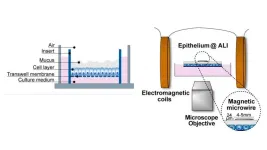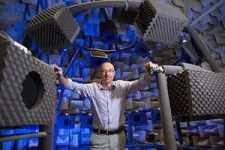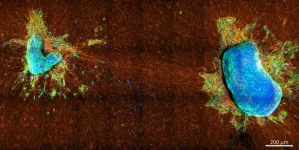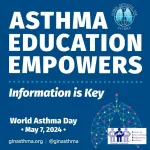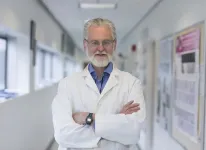(Press-News.org) WASHINGTON, May 7, 2024 – As much as we might not want to think about it, mucus is everywhere in our bodies. It coats our airways and our digestive systems and serves as a first line of defense against pathogens, a habitat for our microbiomes, and a conveyor belt for our insides to keep everything moving smoothly.
The front-line role of mucus means it is often the site of the first symptoms of infection or disease. Understanding how mucus changes, and what it changes in response to, can help diagnose illnesses and develop treatments. Designing a study to measure the physical properties of mucus, however, is nothing to sneeze at.
In APL Bioengineering, by AIP Publishing, researchers from Stanford University developed a system to grow mucus-producing intestinal cells and study the characteristics of the mucus in different conditions. Their platform can explore the effects of pathogens and help develop medications to combat them.
Currently, researchers looking to study intestinal mucus commonly use lab animals for their experiments. These animals would be given a pathogen or drug, and researchers would surgically remove the intestinal mucus to study the effects. This process is expensive, complex, and most importantly, deeply unpleasant for the animals.
In addition, the researchers say, the act of removing the mucus is likely to change how it behaves, making any obtained results unreliable.
“When people collect the mucus from the animal, they’ll pipette it off or scrape it off,” said author Margaret Braunreuther. “But what we found is that when we pipette the mucus layer from our cell culture, we see a very different behavior after that action. We think that the act of pipetting or scraping this very soft polymeric solution is resulting in more liquidlike behavior.”
The alternative process developed by the Stanford team involves growing a layer of intestinal cells on a laboratory plate exposed to air. These cells produce a layer of mucus that the researchers can easily access for testing. Using a magnetic wire, they could measure the consistency of the mucus without affecting its properties.
“We put this wire on the mucus layer of the live cells, and then we applied a magnetic force to this probe and measured its displacement,” said Braunreuther. “From the relationship between the applied force and the magnetic wire displacement, we can then calculate the rheological properties of the material.”
Using this setup, the team simulated an infection by a parasitic worm to observe how the mucus responds. This study serves as both a practical demonstration of their platform and a glimpse into how these infections could be treated.
The group is now exploring even more ways to leverage their approach for better mucus health.
“We have a parallel effort to study airway mucus, looking at conditions such as cystic fibrosis and acute asthma,” said author Gerald Fuller. “We also started a collaboration with a group in Berlin to develop drugs to restore a healthy mucus response.”
###
The article “Air-liquid intestinal cell culture allows in situ rheological characterization of intestinal mucus” is authored by Pamela C. Cai, Margaret Braunreuther, Audrey Shih, Andrew J. Spakowitz, Gerald G. Fuller, and Sarah C. Heilshorn. It will appear in APL Bioengineering on May 7, 2024 (DOI: 10.1063/5.0187974). After that date, it can be accessed at https://doi.org/10.1063/5.0187974.
ABOUT THE JOURNAL
APL Bioengineering is an open access journal publishing significant discoveries specific to the understanding and advancement of physics and engineering of biological systems. See http://aip.scitation.org/journal/apb.
###
END
Seeking medical insights in the physics of mucus
In vitro testing platform offers a slimy window into gut health and disease treatments
2024-05-07
ELSE PRESS RELEASES FROM THIS DATE:
Study sheds light on cancer cell ‘tug-of-war’
2024-05-07
WASHINGTON, May 7, 2024 – Understanding how cancerous cells spread from a primary tumor is important for any number of reasons, including determining the aggressiveness of the disease itself. The movement of cells into the extracellular matrix (ECM) of neighboring tissue is an essential step in cancer progression that directly correlates to the onset of metastasis.
In APL Bioengineering, by AIP Publishing, a team of researchers from Germany and Spain used a breast cancer cell line panel and primary tumor explants from breast and cervical cancer patients to ...
Social determinants of health and the availability of cancer clinical trials in the US
2024-05-07
About The Study: Substantial geographic disparities in cancer clinical trials availability exist throughout the United States, with the most socially vulnerable counties being far less likely to have any trial and having only a fraction of trials available, a disparity that has worsened over time.
Corresponding Author: To contact the corresponding author, Rishi Robert Sekar, M.D., M.S., email rsekar@med.umich.edu.
To access the embargoed study: Visit our For The Media website at this link https://media.jamanetwork.com/
(doi:10.1001/jamanetworkopen.2024.10162)
Editor’s Note: Please ...
Multilevel characteristics of cumulative symptom burden in young survivors of childhood cancer
2024-05-07
About The Study: The findings of this study suggest that symptoms are prevalent years after young childhood cancer survivors’ initial cancer diagnosis, and interventions to reduce caregiver anxiety and neighborhood adversity and improve resilience may alleviate symptom burden.
Corresponding Author: To contact the corresponding author, I-Chan Huang, Ph.D., email i-chan.huang@stjude.org.
To access the embargoed study: Visit our For The Media website at this link https://media.jamanetwork.com/
(doi:10.1001/jamanetworkopen.2024.10145)
Editor’s Note: Please see the article for additional information, ...
Why getting in touch with our ‘gerbil brain’ could help machines listen better
2024-05-07
Macquarie University researchers have debunked a 75-year-old theory about how humans determine where sounds are coming from, and it could unlock the secret to creating a next generation of more adaptable and efficient hearing devices ranging from hearing aids to smartphones.
In the 1940s, an engineering model was developed to explain how humans can locate a sound source based on differences of just a few tens of millionths of a second in when the sound reaches each ear.
This model worked on the theory that we must ...
It flickers, then it tips – study identifies early warning signals for the end of the African humid period
2024-05-07
The transition from the African Humid Period (AHP) to dry conditions in North Africa is the clearest example of climate tipping points in recent geological history. They occur when small perturbations trigger a large, non-linear response in the system and shift the climate to a different future state, usually with dramatic consequences for the biosphere. That was also the case in North Africa, where the grasslands, forests, and lakes favored by humans disappeared, causing them to retreat to areas like the mountains, oases, and the Nile Delta. This ...
Aquatic weed among ‘world’s worst’ expands in Northeastern US
2024-05-07
WESTMINSTER, Colorado – 7 May 2024 – An article in the latest issue of Invasive Plant Science and Management provides new insights on a northern hydrilla (Hydrilla verticillata) subspecies (lithuanica) and its establishment outside the Connecticut River. Considered among the “world’s worst” aquatic weeds, northern hydrilla hinders recreational activities by forming dense canopies. If unchecked, it has the potential to displace native species and host a bacterium that produces ...
Emergency department packed to the gills? Someday, AI may help
2024-05-07
UCSF-led study finds artificial intelligence is as good as a physician at prioritizing which patients need to be seen first.
Emergency departments nationwide are overcrowded and overtaxed, but a new study suggests artificial intelligence (AI) could one day help prioritize which patients need treatment most urgently.
Using anonymized records of 251,000 adult emergency department (ED) visits, researchers at UC San Francisco evaluated how well an AI model was able to extract symptoms from patients’ ...
Asthma education is key to reducing deaths worldwide, say respiratory health associations
2024-05-07
NEW YORK, NY - May 7, 2024 – On World Asthma Day 2024 the message is clear: "Asthma Education Empowers." The Forum of International Respiratory Societies (FIRS), of which the American Thoracic Society is a founding member, stresses the crucial role of education in empowering people with asthma to manage their condition effectively and to know when to seek medical assistance.
FIRS also urges health care professionals to enhance their awareness of the preventable morbidity and mortality from asthma and of the published evidence on effective asthma management, so they are equipped to provide reliable information and optimal treatment for their patients.
Asthma ...
60% of women with disabilities view cannabis as a ‘harmless’ drug
2024-05-07
A growing number of states and territories in the United States have legalized medical and recreational cannabis use. As such, recreational cannabis has been associated with a lower perception of risk of harm in the general U.S. population.
However, in women of childbearing age, evidence has shown that cannabis use may increase the risk of adverse reproductive and perinatal health outcomes. Furthermore, research on the perception of risk from using cannabis among vulnerable populations such as those with disabilities is lacking.
Using data from the 2021 National Survey on Drug Use and Health, researchers from Florida ...
Years after his death, late scientist's work could yield new cancer treatments
2024-05-07
Some of the final work of a late University of Virginia School of Medicine scientist has opened the door for life-saving new treatments for solid cancer tumors, including breast cancer, lung cancer and melanoma.
Prior to his sudden death in 2016, John Herr, PhD, had been collaborating with UVA Cancer Center’s Craig L. Slingluff Jr., MD, to investigate the possibility that a discovery from Herr’s lab could help treat cancer.
Eight years of research has borne that idea out: Herr’s research into the SAS1B protein could lead to “broad and profound” new treatments ...
LAST 30 PRESS RELEASES:
Post-stroke injection protects the brain in preclinical study
Cardiovascular risk score predicts multiple eye diseases
Health: estimated one in ten British adults used or interested in GLP-1 medications for weight loss
Exercise to treat depression yields similar results to therapy
Whooping cough vaccination for pregnant women strengthens babies’ immune system
Dramatic decline in new cases of orphanhood in Uganda driven by HIV treatment and prevention programs
Stopping weight loss drugs linked to weight regain and reversal of heart health markers
Higher intake of food preservatives linked to increased cancer risk
Mass General Brigham–developed cholera vaccine completes phase 1 trial
First experimental validation of a “150-year-old chemical common sense” direct visualization of the molecular structural changes in the ultrafast anthracene [4+4] photocycloaddition reaction
Lack of support for people on weight loss drugs leaves them vulnerable to nutritional deficiencies, say experts
Dogs’ dinners can have greater climate impact than owners’
Are you ready to swap salmon for sprats and sardines?
1.6 million UK adults used weight loss drugs in past year
American College of Cardiology comments on new dietary guidelines for Americans
American Society of Gene & Cell Therapy and Orphan Therapeutics Accelerator partner to advance and commercialize promising rare disease treatments
One in 14 patients having day case surgery have new or worse chronic pain 3 months after their operation
New study highlights link between eviction rates and gun violence
Heatwaves heat up soil but not toxin levels in rice, study finds
Digital modeling reveals where construction carbon emissions really come from
Turning farm waste into water filters
New study shows how the spleen helps the immune system accept a transplant
New Mayo Clinic study advances personalized prostate cancer education with an EHR-integrated AI agent
Researchers identify novel therapeutic target to improve recovery after nerve injury
Microbes in breast milk help populate infant gut microbiomes
Reprogramming immunity to rewrite the story of Type 1 diabetes
New tool narrows the search for ideal material structures
Artificial saliva containing sugarcane protein helps protect the teeth of patients with head and neck cancer
Understanding the role of linear ubiquitination in T-tubule biogenesis
Researchers identify urban atmosphere as primary reservoir of microplastics
[Press-News.org] Seeking medical insights in the physics of mucusIn vitro testing platform offers a slimy window into gut health and disease treatments
